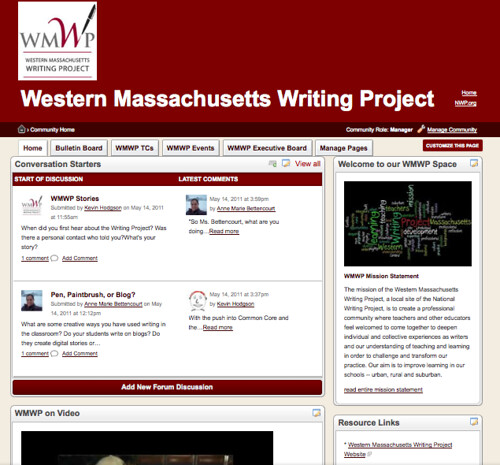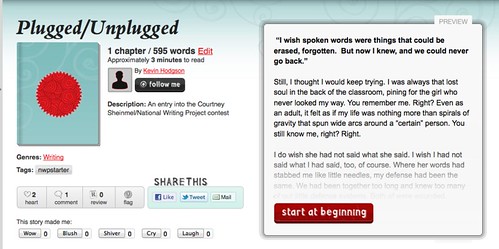If you read my blog (thank you), you know how much I support and respect the work of the National Writing Project. In my first year of teaching, I found the local affiliate (Western Massachusetts Writing Project) and took part in the Summer Institute, and I have been influenced by its philosophy and work ever since. I’m not sure how I would have been able to teach as I do with NWP friends and educators to turn to for help and for support and for partnership.
So it was a great honor when last year, the NWP contacted me to ask if I would be willing to let a photographer spend the day in my classroom to gather photos for a feature of me for the NWP Annual Report. I was a bit shocked but of course, I agreed. The NWP had just lost all of its federal funding and it hopes to use the Annual Report to make its case with the federal government for support, and for other grant-funding institutions.
As it turned out, and as I planned, the day the photographer came to hang out with us, we were doing a poetry unit and working on Poems for Two Voice podcasts with our iPod Touch devices. I recently received a few copies of the Annual Report, and passed a few on to our school administration, and I love the photos of my kids in the midst of their learning. And Paul Oh’s kind write-up of me was nicely done, too.
I showed the report to my students the other day, and they were duly impressed with the photos of last year’s students, and with me. But I told them that it was the work they are doing as writers that gets attention. It’s another motivational factor for them — the fact that the spotlight might shine at any moment. So, be ready for it.
Here is a link to the NWP Annual Report (click on 2010 Annual Report link) but I have also embedded it. My kids and I are near the end – pages 19 and 20 with one of my students featured in a full spread on page 2.
Peace (in the report),
Kevin








